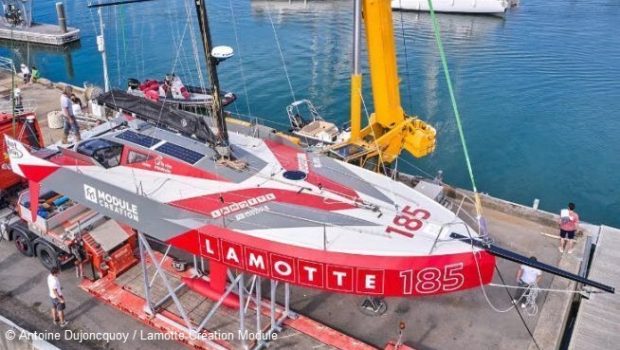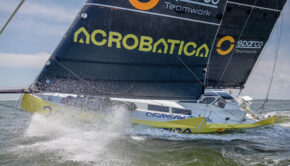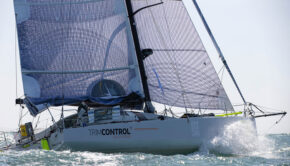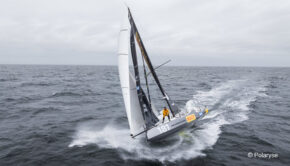Scow bows rule the seas
Published on October 11th, 2022
Class organizations such as the Mini 6.50, Class40, and IMOCA support offshore competition, and when courses are long enough, routing seeks out the benefits of offwind angles. Over time, designing to these class rules have developed hulls that may not go upwind too well but more than make up for it as the wind angles comes back.
Such as the scow bow.
Sam Manuard is a renowned architect in the scow world, and what began as a radical concept with the Mini Class, has seen its success trickle up to the Class40 and IMOCA which will be on full display in the 2022 Route du Rhum when it starts November 6.
These big bowed boats will be spanning the transatlantic from France to Guadeloupe, with the
3543nm course providing the latest test. Here are some comments from Manuard in boatsnews.com:
Regarding the state of design:
Nowadays, everyone makes scows. There is no more debate on the subject. There are always nuances on the scow theme. Lombard with the Lift has made a very powerful boat, VPLP with the Clak40 which looks more versatile. It’s progressing well and the different designs are pretty close in performance. Everyone has raised their game.
Versatility versus all-around performance:
We are interested in the statistical distribution of wind and speed for this type of race. We also look at races like the Fastnet, the Normandy Channel Race to have a boat that is efficient in light airs, that goes upwind well. Having a flat spectrum is quite interesting. In the design loop, the Mach5 (his latest design) has the Route du Rhum as its primary objective. But also the other races, not necessarily with the same level of priority. In any case, the choices made should be effective on all types of races.
But for an offwind race like the Route du Rhum…
With an increasing number of scows, the classic (non-scow) boats no longer have a chance of winning.









 We’ll keep your information safe.
We’ll keep your information safe.